- Choosing the Right Variety of Tomato Seeds
- Providing Adequate Sunlight and Temperature
- Preparing the Soil for Tomato Cultivation
- Properly Watering the Tomato Plants
- 1. Watering Frequency
- 2. Watering Amount
- 3. Watering Time
- 4. Watering Method
- 5. Mulching
- 6. Watering Depth
- 7. Watering Consistency
- Controlling Pest and Disease Infestations
- Pruning and Supporting Tomato Plants
- 1. Pruning
- 2. Supporting
- Harvesting and Storing Tomatoes
- 1. Harvesting Tomatoes
- 2. Removing Leaves and Stems
- 3. Sorting and Inspection
- 4. Storing Tomatoes
- 5. Ripen Green Tomatoes
- 6. Freezing Tomatoes
- 7. Canning Tomatoes
- “Question-Answer”
- What are some important points for growing tomatoes in open fields?
- How can I boost the seed germination percentage for tomatoes?
- What should I consider when choosing a variety of tomatoes for open field cultivation?
- What are some common pests and diseases that affect tomato plants?
- How can I control pests and diseases in tomato plants?
- What are the optimal temperature and humidity levels for growing tomatoes?
- Why is pruning and staking important for tomato plants?
- “Video” 10 TRICKS TO GROW TONS OF TOMATOES | COMPLETE GUIDE
Tomatoes are one of the most popular vegetables grown in open fields due to their versatile uses and nutritional value. However, achieving a high seed germination percentage and healthy plants requires careful attention to several key factors. In this article, we will explore seven important points to consider when growing tomatoes in open fields and boosting seed germination percentage.
1. Optimal Soil Fertility: Tomatoes thrive in fertile soil that is rich in organic matter. It is crucial to conduct a soil test before planting to determine the nutrient levels and pH. Adding compost or well-rotted manure can help improve soil fertility and ensure optimal conditions for seed germination.
2. Adequate Drainage: Tomatoes require well-drained soil to prevent waterlogged conditions, as excessive moisture can lead to seed rot and fungal diseases. Ensuring proper drainage can be achieved by incorporating organic matter or using raised beds to improve soil structure.
3. Ample Sunlight: Tomatoes are sun-loving plants that require a minimum of 6-8 hours of direct sunlight daily. When selecting a site for planting, choose an area that receives maximum sunlight throughout the day to promote healthy growth and maximize seed germination percentage.
4. Proper Spacing: Providing adequate spacing between tomato plants is crucial for optimal air circulation and preventing the spread of diseases. Be sure to follow the recommended planting distances for your specific tomato variety to ensure healthy plant development and maximum yield.
5. Regular Watering: Consistent and regular watering is essential for tomato plants, especially during hot and dry periods. While it is important to avoid overwatering, allowing the soil to dry out completely can hinder seed germination and affect plant development. It is recommended to water tomatoes at the base and avoid wetting the foliage to prevent fungal diseases.
6. Pest and Disease Control: Tomatoes are susceptible to various pests and diseases, including aphids, whiteflies, and blight. Implementing integrated pest management practices and monitoring plants regularly can help identify and address any issues early on. Additionally, practicing crop rotation and providing proper sanitation can minimize the risk of disease buildup.
7. Support and Pruning: Tomato plants benefit from support systems, such as cages or stakes, to keep the plants upright and prevent fruit rot. Regular pruning of side shoots and lower leaves can promote better airflow and reduce the risk of diseases. It is important to handle the plants gently to avoid any damage during the pruning process.
By considering these seven important points, growers can improve their seed germination percentage and successfully grow tomatoes in open fields. Following these guidelines will not only result in healthy plants but also help maximize yield and achieve high-quality tomatoes.
Choosing the Right Variety of Tomato Seeds
When it comes to growing tomatoes in open fields, choosing the right variety of tomato seeds is crucial for your success. The variety you choose will determine the overall yield, disease resistance, and taste of your tomatoes. Here are some important factors to consider when selecting tomato seeds:
- Growing Season: Different tomato varieties have different growing seasons. Some varieties are better suited for warm climates, while others can tolerate cooler temperatures. Consider your location and climate when selecting tomato seeds.
- Yield: Pay attention to the expected yield of the tomato variety. If you are growing tomatoes for commercial purposes, you might want to choose high-yielding varieties. On the other hand, if you are growing tomatoes for personal consumption, you can opt for smaller-yielding but tastier varieties.
- Disease Resistance: Some tomato varieties are bred to be more resistant to common diseases like blight, wilt, or viruses. Check the seed packet or do some research to find out if the variety you are interested in has any disease resistance traits.
- Growth Habit: Consider the growth habit of the tomato plant. Determinate varieties tend to grow in a bushy fashion and produce their fruit all at once, while indeterminate varieties grow as vines and produce fruit continuously throughout the growing season.
- Taste and Use: Think about how you plan to use your tomatoes. Some varieties are better suited for slicing and eating fresh, while others are ideal for canning, sauces, or salads. Consider the taste and texture of the fruit when making your selection.
- Size and Shape: Tomato varieties come in different sizes and shapes. From large beefsteak tomatoes to small cherry tomatoes, each variety has its own unique characteristics. Consider what size and shape will best suit your needs.
- Availability and Source: Make sure the variety you choose is readily available and from a reputable source. Seed catalogs, garden centers, and online retailers are good places to find a wide range of tomato seeds.
By considering these factors, you can choose the right variety of tomato seeds that will meet your specific needs and help you grow a successful tomato crop in open fields.
Providing Adequate Sunlight and Temperature
One of the most important factors for successfully growing tomatoes in open fields is to provide them with adequate sunlight and temperature. Tomatoes are warm-season plants and require plenty of direct sunlight to thrive.
Here are a few key points to consider:
- Sunlight: Tomatoes need at least 6-8 hours of direct sunlight per day to grow and produce fruit. Choose an open field location that receives full sunlight and is not shaded by buildings, trees, or other structures.
- Temperature: Tomatoes prefer a warm temperature range of 70-85°F (21-29°C) during the day and 60-70°F (15-21°C) at night. Cold temperatures can stunt their growth and delay fruit production. Avoid planting tomatoes too early in the season when frost is still a risk.
- Soil temperature: Before planting tomatoes, ensure that the soil temperature is at least 60°F (15°C). Colder soil temperatures can slow down seed germination and affect the overall growth of the plants. Use a soil thermometer to check the temperature before planting.
- Microclimate: Take into account the microclimate of your field, such as wind patterns, slopes, and nearby structures. These factors can affect temperature and sunlight exposure. For example, planting tomatoes on a south-facing slope can provide additional warmth and sunlight.
Protecting from extreme temperatures: During periods of extreme heat or cold, you may need to provide additional protection to your tomato plants. Use shade cloth or row covers to shield them from excessive sunlight or frost. Mulching around the plants can also help regulate soil temperature.
By providing your tomatoes with the right amount of sunlight and temperature, you can ensure optimal growth and improve seed germination percentage.
Preparing the Soil for Tomato Cultivation
Before planting tomatoes in open fields, it is important to properly prepare the soil to provide the plants with the necessary nutrients and environment for optimal growth. Here are a few steps to follow when preparing the soil for tomato cultivation:
Test the soil: Start by testing the soil’s pH level and nutrient content. Tomatoes prefer a slightly acidic soil with a pH level of around 6.0-6.8. Conducting a soil test will help you determine if any adjustments need to be made.
Remove weeds and unwanted vegetation: Clear the area of any weeds, grass, or unwanted vegetation that may compete with the tomato plants for nutrients and sunlight. This can be done by manually pulling out the weeds or by using herbicides.
Till the soil: Use a tiller or a garden fork to loosen the soil to a depth of at least 12 inches. This will improve soil drainage, aeration, and root penetration.
Add organic matter: Incorporate organic matter such as compost, well-aged manure, or peat moss into the soil. This will enhance soil fertility, structure, and moisture-holding capacity.
Apply fertilizers: Based on the results of the soil test, apply the necessary fertilizers to provide essential nutrients to the tomato plants. A balanced fertilizer with a ratio of 10-10-10 or 14-14-14 is generally recommended.
Adjust pH if needed: If the soil test indicates that the pH level is too high or too low, make the necessary pH adjustments using lime or sulfur. Follow the instructions on the product packaging for the correct amount and method of application.
Mulch the soil: After preparing the soil, apply a layer of organic mulch such as straw, hay, or wood chips. This will help conserve moisture, suppress weed growth, and regulate soil temperature.
By following these steps to prepare the soil for tomato cultivation, you can provide the plants with a fertile and nutrient-rich environment, setting the foundation for healthy growth and high yields.
Properly Watering the Tomato Plants
Proper watering is essential for the healthy growth of tomato plants. Here are some important points to consider when watering your tomato plants:
1. Watering Frequency
Tomato plants need regular watering, especially during hot and dry weather. Water the plants deeply at least once a week, ensuring that the water reaches the root zone. Avoid frequent shallow watering, as it encourages shallow root development and makes the plants more susceptible to drought.
2. Watering Amount
Provide enough water to thoroughly moisten the soil around the tomato plants. Aim for 1-2 inches of water per week, depending on the weather conditions. You can use a rain gauge or insert a finger into the soil to check the moisture level. If the top 1-2 inches of soil feels dry, it’s time to water.
3. Watering Time
Water your tomato plants early in the morning to allow the foliage to dry before the evening. Wet foliage during the night can promote the development of fungal diseases. Watering in the morning also ensures that the plants have enough moisture to withstand the heat of the day.
4. Watering Method
Avoid overhead watering methods, such as sprinklers, as they can lead to fungal diseases and waste water. Instead, use a soaker hose or drip irrigation system to deliver water directly to the root zone. This ensures that the water is efficiently absorbed by the plants and minimizes evaporation.
5. Mulching
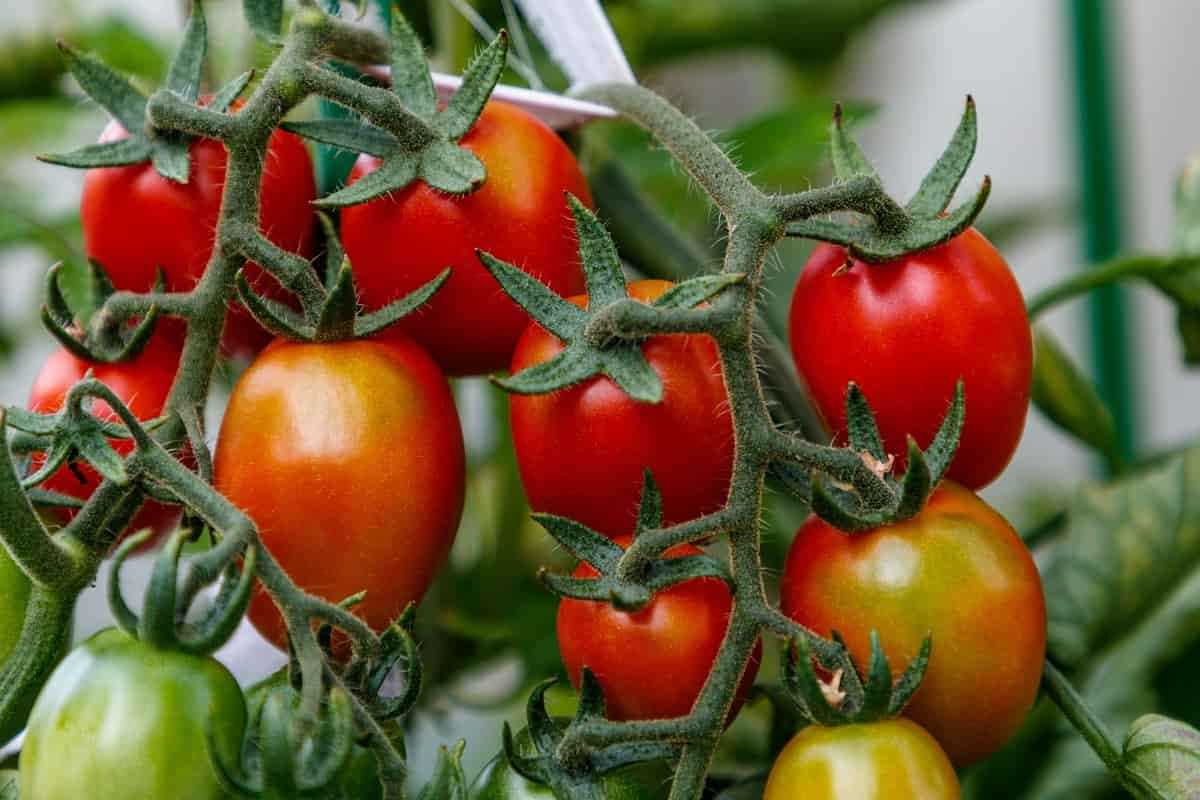
Applying a layer of mulch around the tomato plants helps to conserve moisture in the soil. Mulch keeps the soil temperature stable, reduces evaporation, and helps prevent weed growth. Use organic mulch, such as straw or shredded leaves, and apply it around the base of the plants, keeping a distance from the stem.
6. Watering Depth
Water deeply to encourage deep root growth. Aim to moisten the soil to a depth of 6-8 inches. This provides the plants with access to water even during dry periods. Deep roots also help the plants to withstand wind and support heavy fruit clusters.
7. Watering Consistency
Consistency is key when watering tomato plants. Avoid letting the soil dry out completely and then saturating it with water. This can cause stress to the plants and lead to issues such as blossom end rot. Maintain consistent moisture levels by watering regularly and adjusting the frequency based on weather conditions.
By following these guidelines, you can ensure that your tomato plants receive the proper amount of water, leading to healthy growth and maximum yield.
Controlling Pest and Disease Infestations
1. Regular scouting: Regularly inspect your tomato plants for any signs of pests or diseases. Look for holes in the leaves, discoloration, wilting, or any other abnormalities. Early detection is crucial in controlling infestations.
2. Remove infected plants: If you spot any plants that are heavily infested or infected, promptly remove them from the garden to prevent the spread to other healthy plants.
3. Practice crop rotation: Rotate your crops each season to help prevent the buildup of pests and diseases in the soil. Avoid planting tomatoes in the same spot for consecutive seasons.
4. Use natural predators: Encourage beneficial insects like ladybugs, lacewings, and parasitic wasps to your garden. These insects are natural predators of common tomato pests like aphids and caterpillars.
5. Apply organic pest controls: Use organic pest control methods like neem oil, insecticidal soap, or garlic spray to control common pests. These remedies are safe for the environment and do not harm beneficial insects.
6. Provide good air circulation: Make sure your tomato plants have enough space between them to allow for good air circulation. This helps prevent the development and spread of diseases, particularly fungal diseases.
7. Clean garden tools: Clean your gardening tools regularly to prevent the spread of diseases from one plant to another. Disinfect tools with a solution of water and bleach or rubbing alcohol.
8. Practice good hygiene: Wash your hands thoroughly before and after handling tomato plants to avoid introducing any pests or diseases. Avoid touching your face or other plants while working in the garden.
9. Train and stake plants: Properly train and stake your tomato plants to keep the foliage off the ground. This reduces the risk of disease transmission from soil splashing onto the leaves.
10. Use resistant varieties: When choosing tomato varieties, opt for those that are resistant to common pests and diseases in your area. This can help minimize the risk of infestations and reduce the need for chemical controls.
By following these pest and disease control measures, you can significantly minimize the risk of infestations and ensure that your tomato plants remain healthy and productive.
Pruning and Supporting Tomato Plants
Pruning and supporting tomato plants are important techniques that can help enhance their growth and productivity. When done properly, pruning and supporting can lead to better air circulation, pest control, and fruit quality.
1. Pruning
Pruning involves removing unnecessary branches and leaves from the tomato plants. This process allows the plant to distribute its energy more efficiently, resulting in stronger stems, better airflow, and increased sunlight exposure.
- Start pruning when the tomato plant reaches about 12-18 inches in height.
- Remove the suckers from the leaf axils. Suckers are the small shoots that grow in the crotch between the main stem and a leaf stem.
- Remove any lower leaves that touch or are close to the soil to prevent the spread of diseases.
- Prune off any yellow or diseased leaves to maintain plant health.
2. Supporting
Supporting tomato plants is essential to prevent them from sprawling on the ground, reducing the risk of diseases, and making harvesting easier. There are several methods for supporting tomato plants:
- Staking: Insert a stake into the ground near each tomato plant. Tie the main stem of the plant to the stake using soft twine or cloth strips. Regularly check and adjust the ties as the plant grows.
- Caging: Place a wire tomato cage around each plant to provide support as it grows. This method is particularly useful for indeterminate tomato varieties that can reach significant heights.
- Trellising: Attach a trellis or fence to support the tomato plants. As the plant grows, gently guide it along the trellis and secure it with twine or clips.
Choose a supporting method that suits your tomato variety and space availability. Ensure the support structure is sturdy enough to bear the weight of the plants and fruit.
By implementing proper pruning and supporting techniques, you can ensure the healthy growth of your tomato plants and maximize your tomato harvest.
Harvesting and Storing Tomatoes
Harvesting tomatoes at the right time and storing them properly is essential to ensure the best flavor and longevity of the fruit.
1. Harvesting Tomatoes
- Tomatoes should be harvested when they are fully ripe but still firm.
- Check the tomatoes for their mature color depending on the variety.
- Hold the tomato in your hand and gently twist it to detach it from the vine.
- Avoid pulling or tugging on the vine, as this can damage the plant.
2. Removing Leaves and Stems
- After harvesting, remove any attached debris or leaves from the tomatoes.
- Trim off the stem, leaving a small portion to prevent any damage to the fruit.
- Do not wash the tomatoes before storing, as it can promote rotting.
3. Sorting and Inspection
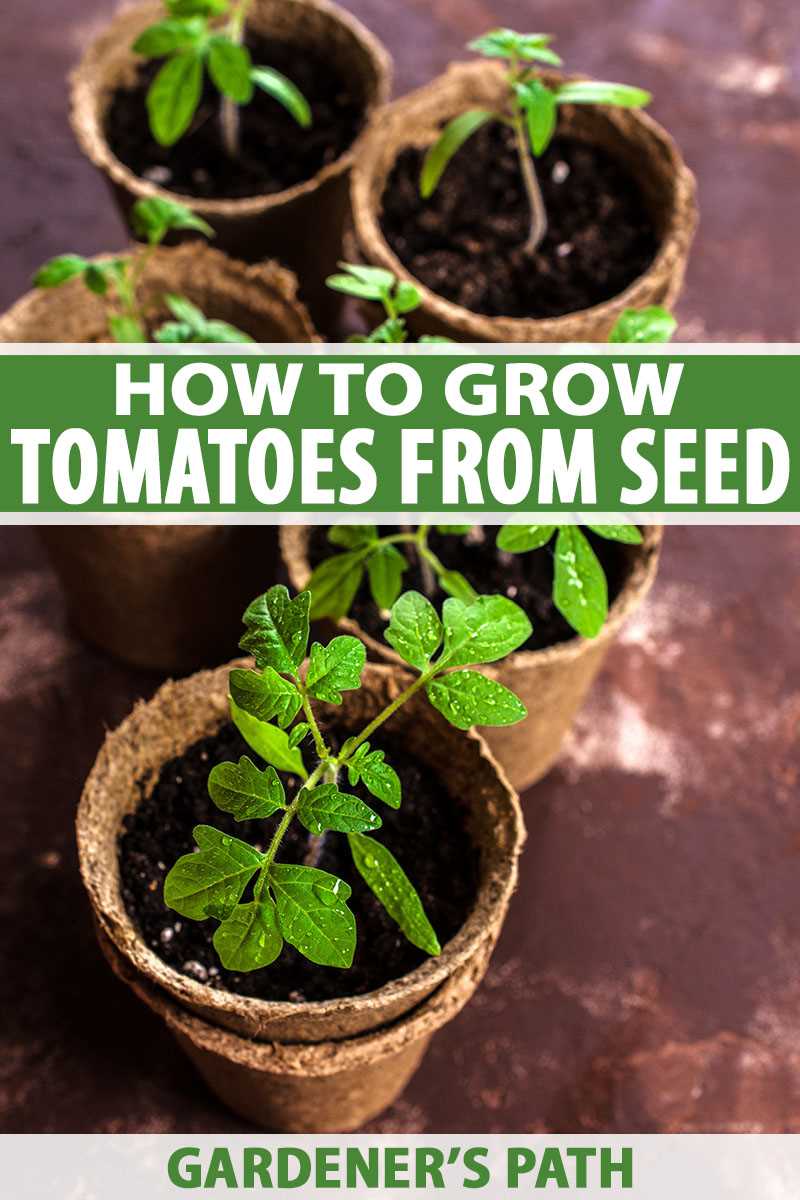
- Sort the harvested tomatoes by size, color, and ripeness.
- Discard any damaged, bruised, or overripe tomatoes.
- Inspect each tomato for any signs of disease or pests.
4. Storing Tomatoes
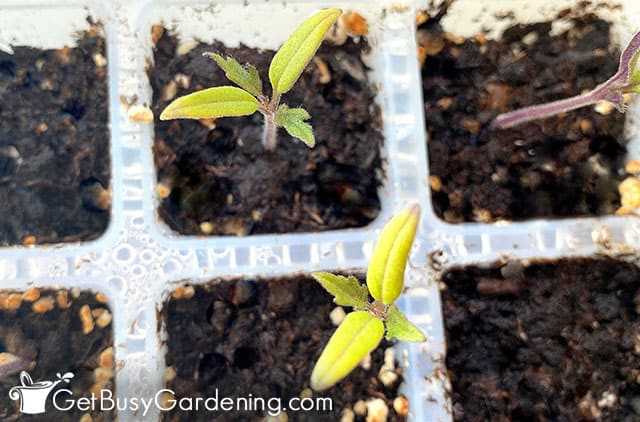
- There are two main methods for storing tomatoes: at room temperature or in the fridge.
- If you choose to store tomatoes at room temperature, place them in a single layer to prevent them from squashing each other.
- Keep them away from direct sunlight and in a cool, dry place.
- If you prefer to store tomatoes in the fridge, place them in a plastic bag or container to protect them from moisture loss.
5. Ripen Green Tomatoes
- If you have harvested green tomatoes, they can be ripened indoors.
- Place the green tomatoes in a paper bag with a ripe banana or apple.
- The ethylene gas produced by these fruits will help ripen the tomatoes faster.
6. Freezing Tomatoes
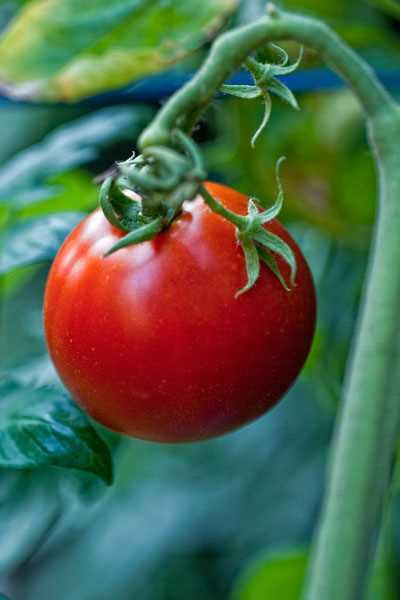
- If you have a surplus of tomatoes, you can freeze them for later use.
- Wash the tomatoes and remove the stem.
- Blanch them in boiling water for a minute, then transfer to an ice bath to cool.
- Remove the skins and freeze the tomatoes whole or chopped.
7. Canning Tomatoes
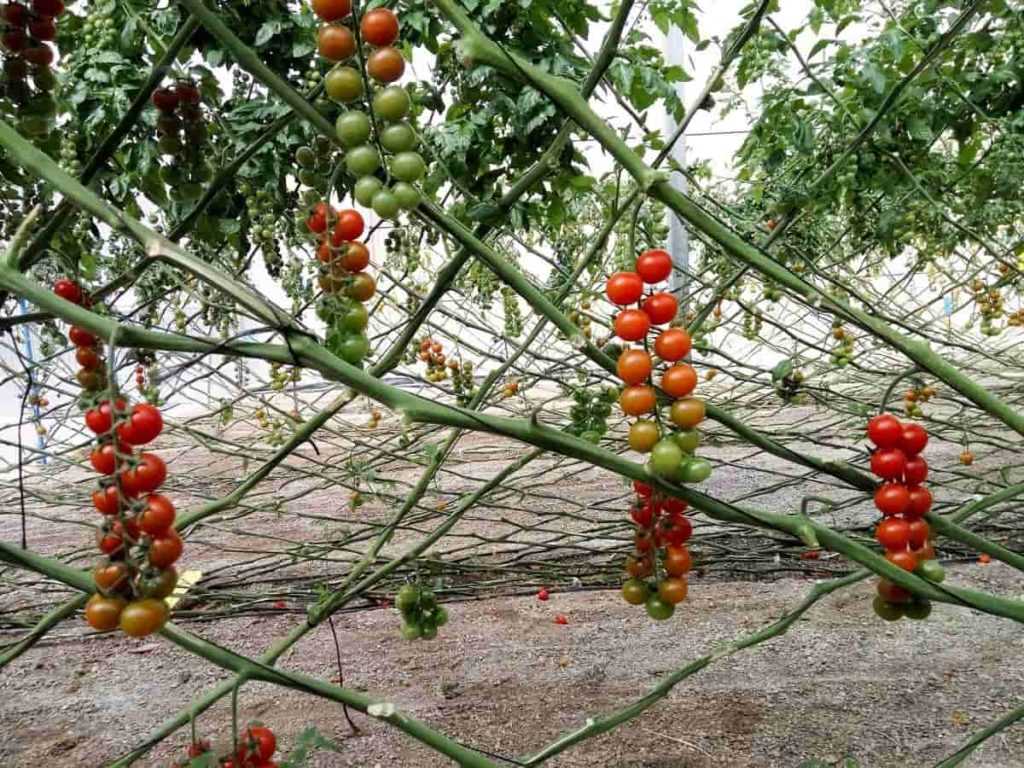
- Another way to preserve tomatoes is by canning them.
- Wash the tomatoes and remove the stem.
- Place them in boiling water for a few minutes, then transfer to an ice bath to cool.
- Peel off the skins and pack the tomatoes into sterilized jars.
By following these steps, you can ensure that your harvested tomatoes stay fresh and delicious for an extended period of time.
“Question-Answer”
What are some important points for growing tomatoes in open fields?
Some important points for growing tomatoes in open fields are choosing the right variety, preparing the soil properly, providing adequate water and nutrients, controlling pests and diseases, maintaining optimal temperature and humidity levels, and proper pruning and staking of the plants.
How can I boost the seed germination percentage for tomatoes?
To boost the seed germination percentage for tomatoes, you can soak the seeds in water overnight before sowing, scarify the seed coat to allow better water absorption, maintain a consistent moisture level during germination, provide warm temperatures, and use quality seeds from reliable sources.
What should I consider when choosing a variety of tomatoes for open field cultivation?
When choosing a variety of tomatoes for open field cultivation, you should consider factors such as the climate and weather conditions of your region, the diseases prevalent in your area, the desired size and flavor of the tomatoes, and the intended use of the tomatoes (e.g., fresh consumption or processing).
What are some common pests and diseases that affect tomato plants?
Some common pests that affect tomato plants are aphids, whiteflies, tomato hornworms, and spider mites. Common diseases include blight, powdery mildew, and tomato mosaic virus.
How can I control pests and diseases in tomato plants?
To control pests and diseases in tomato plants, you can use organic or chemical insecticides, practice crop rotation, remove and destroy infected plants, provide good air circulation, and maintain proper levels of moisture and nutrients to enhance the plant’s natural resistance.
What are the optimal temperature and humidity levels for growing tomatoes?
The optimal temperature range for growing tomatoes is between 70-85°F (21-29°C). As for humidity, tomatoes prefer a moderate level around 50-70%. High humidity levels can promote diseases, so it’s important to maintain good air circulation.
Why is pruning and staking important for tomato plants?
Pruning and staking are important for tomato plants because they help improve air circulation, prevent the plants from sprawling on the ground, reduce the risk of diseases, increase exposure to sunlight, and facilitate easier harvesting.







